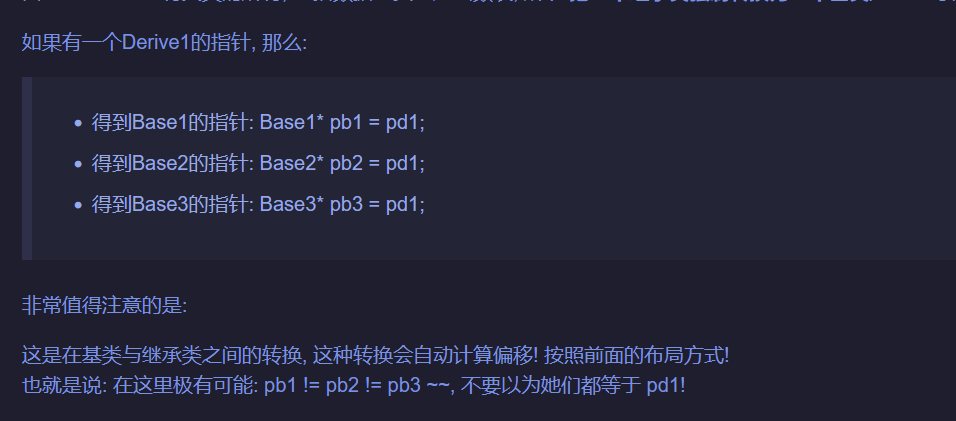The memory layout of a struct/class in cpp¶
1. without virtual function¶
- Static in global variable state
- Other order located in the struct
2. with virtual function¶
1. Self owning virtual function¶
This will place a vtable_ptr at the start of this struct. which type is void **.
And it is pointing to the real and unique virtual function table: A array of void* (function ptr)
2. Inherited from a struct with virtual function¶
vtable_ptr holding by the parent. And the child's virtual functions will push_back to the table that parent owing. But parent will only know the size of function of itself knows.
The child call its virtual function, can get the parent's vtable_ptr, then do a offset binary operation to update it.
3. Inherited from 2 struct with virtual functions¶
1. Both A and B have virtual functions¶
| C++ | |
|---|---|
1 2 3 4 5 6 7 | |
f_c function will be push_back to A's vtable
2. A have virtual functions , but B dose not have¶
same as the condition above...
3. A does not virtual functions , but B have¶
| C++ | |
|---|---|
1 2 3 4 5 6 7 | |
f_c function will be push_back to B's vtable..
BUT the B's vtable will be put at the start of this struct.
4. Multiple base class, put first which first have the virtual table¶
3. Base ptr to child ptr¶
